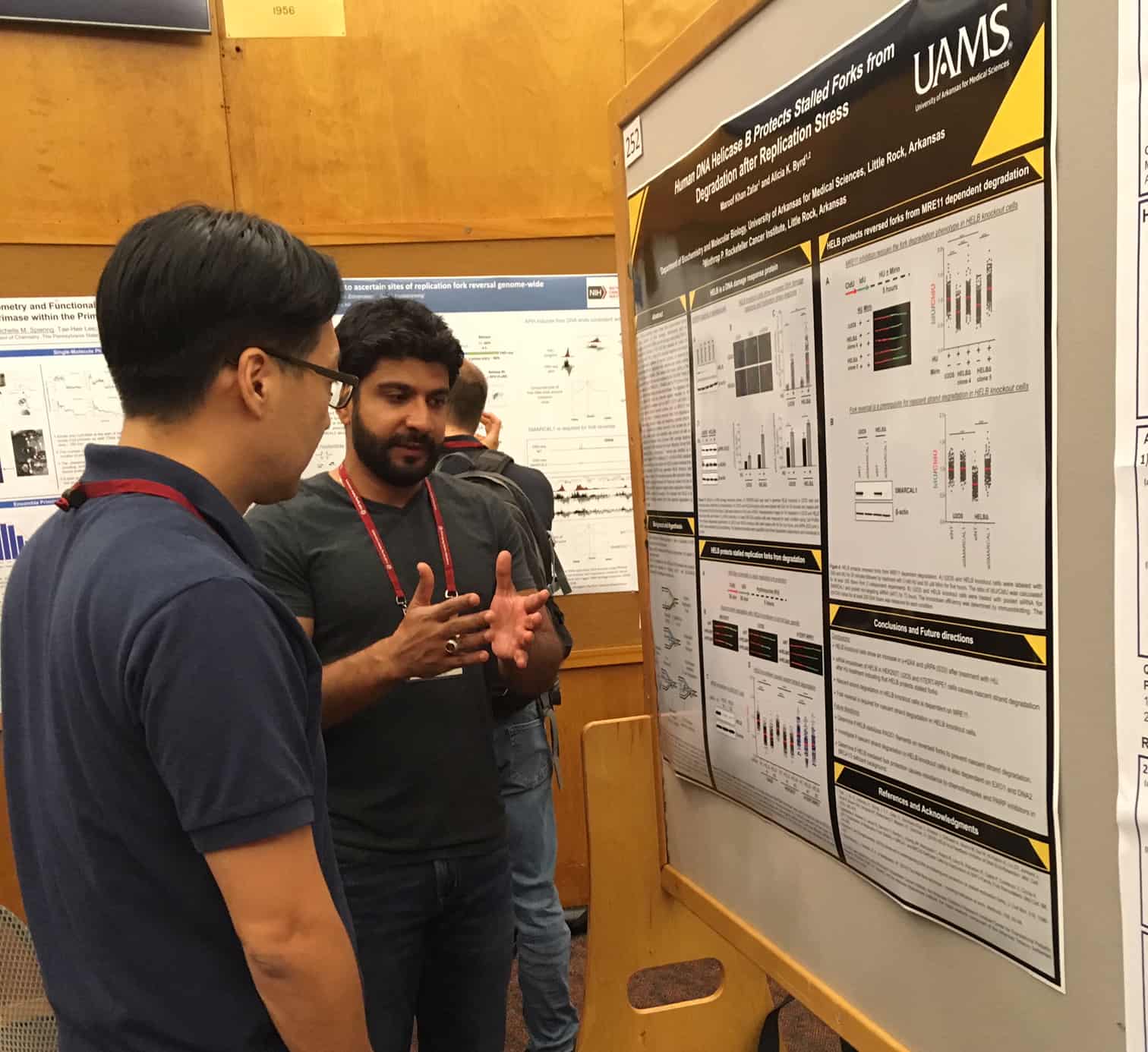Year-End Funds from Chancellor Benefit Researchers
| Oct. 25, 2019 | The end of the last fiscal year brought $301,828 in total funds and new beginnings to some members of the UAMS research community, assisting with pilot grants, travel expenses and new equipment.
Chancellor Cam Patterson, M.D., MBA, released the year-end funds to the Office of Research to make the awards possible. Research investigators responded rapidly and enthusiastically to the following grant opportunities with more than $1.35 million in requests for funding. The UAMS Research Committee, including Shuk-Mei Ho, Ph.D., vice chancellor for research, reviewed the requests to award as many of the requests as possible.
Nukhet Aykin-Burns, Ph.D., an associate professor in the Division of Radiation Health in the College of Pharmacy, credited the funds she received for making it possible for her to get additional funding for a pilot study. Using funds from the Vice Chancellor for Research Pilot Award, she was able to pay for an experimental demonstration that generated data to support her application.
Also with year-end funds, UAMS acquired Emulate Inc.’s Organs-on-Chip technology, which simulates human biology so researchers can better understand how diseases, medicines, chemicals and foods affect human health. The technology can be used for studies on the liver, kidney, lungs and gut, as well as thrombosis and the blood-brain barrier.
Alicia Byrd, Ph.D., assistant professor in the College of Medicine’s Department of Biochemistry and Molecular Biology, used year-end grant funds to purchase a plate reader with fluorescence polarization capabilities. She has used the instrument in her laboratory as have three other UAMS researchers in theirs.
None of the research has been published or used in a grant application at this point, but a manuscript is nearing completion, for which the plate reader was used, and another researcher has plans to use it in his research, Byrd said.
With help from some year-end funding, Maroof Zafar, a postdoctoral fellow in Byrd’s lab, traveled to the Cold Spring Harbor Laboratory Eukaryotic DNA Replication & Genome Maintenance meeting. He presented a poster entitled “Human DNA helicase B protects stalled forks from degradation after replication stress” where he got great feedback from other attendees.
He also learned a lot about DNA replication, replication stress, and recovery from stress. Maroof was selected to be featured as the visitor of the week on the Cold Spring Harbor Laboratory blog (https://currentexchange.cshl.edu/blog/2019/9/visitor-of-the-week-147).
“I appreciate the contribution of Year End Funds from the vice chancellor,” Byrd said. “Both the knowledge gained from the conference attendance for Maroof and the access to the plate reader with fluorescence polarization capabilities have been and will continue to be beneficial to our research.”
